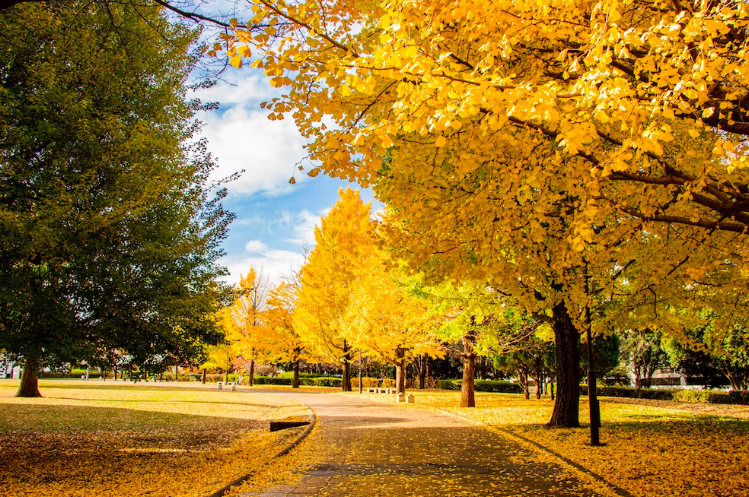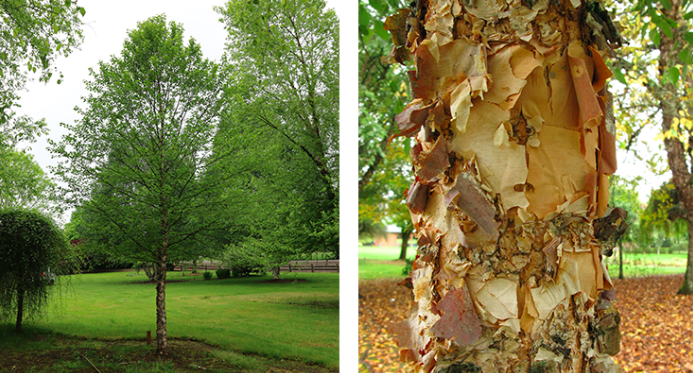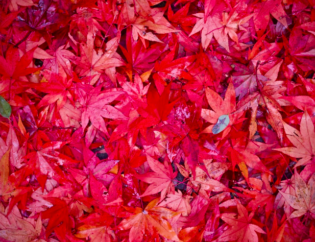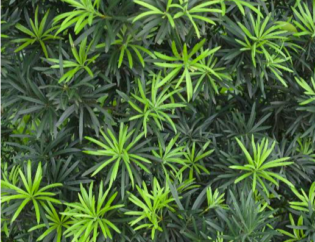
There are many reasons to plant a shade tree–increased property value, shade in the summer for your home, and gorgeous fall color.
“Trees properly placed around buildings can reduce air conditioning needs by 30 percent and can save 20–50 percent in energy used for heating.” -USDA Forest Service
It is important to choose the right shade tree for your space and climate to succeed at maturity. This means planting in the right place (not too close to the house or power lines), the right tree (based on how much room you have or your garden style), and planting in FALL. Read more about why you should plant in Fall here, and all of the reasons why you should plant a tree here.
Where Can I Plant My Shade Tree for Utility Bill Benefits?
You can save a LOT of money on your utility bills if you plant your shade tree in the correct spot. By shading your windows and home in the afternoon, you can save on your air conditioning bill because the shade will help cool your house down. When your shade tree drops its leaves in the winter, this allows the sun into the house and can also help you save on your heating bill.
To achieve shade from the morning sun, plant on the southern or eastern wall of your home near a window. To block the light from the afternoon sun (often the hottest part of the day), plant your shade tree on the western side of your home also next to a window. This will allow the sun to warm up your home in the winter when the sun is able to shine through.
Here are our favorite shade trees to plant, which we have in stock at the nursery.
Ginkgo
The Maidenhair tree is one of the most spectacular trees to see in Fall for the bright yellow foliage. Even the leaves that drop are a gorgeous sight! Planting one of these trees is a contribution to future generations as they are extremely slow growers, yet very heat tolerant.
‘Autumn Gold’ grows around 50′ tall at maturity
‘Princeton Sentry’ is a narrower form at 40′ tall and 15′ wide. Great as a lawn tree! These are fruitless cultivars. Click here for images.
Birch Trees
‘City Slicker’ Birch has interesting peeling bark covers the trunk of this Birch. Glossy dark green foliage in summer turns bright yellow in Fall. It is a broadly pyramidal form, growing 35′ tall by 25′ wide.

‘Dura Heat’ is a variety that was chosen for it’s resistance to heat, disease and drought. While disease here the Valley isn’t an issue, this is an example of how tough this variety is. It is a cultivar of River Birch so it has white bark with lots of peeling texture that reveals dark patches. Grows quickly 30′ to 40′ tall and 25′ to 35′ wide and is a standalone variety that doesn’t need a group of 3.
‘Heritage’ is a standalone variety that does not need to be planted in groups of 3. This variety has larger green leaves and will grow 40′ tall and 30′ wide. It’s defining characteristic is light colored bark that peels to show peach, cream and tan mottled patches. Resist to Bronze Birch Borer. Click here for images.
Red Maples
Red Maples are some of the most spectacular trees you can grow for Fall color. ‘October Glory’ is one of the most common varieties you will see around Turlock, with bright red Fall foliage. Read more about Red Maples here.
Keith Davey Pistache
Another amazing Fall tree, ‘Keith Davey’ boasts a medley of yellow, red, purple and orange leaflets in the fall. Keith Davey is a male form, so it won’t drop fruit like the females will. It is a rather large tree, growing up to 60′ tall and wide, so it can be best used as a lawn tree given the space. The dense foliage provides ample shade to cool your house down in the summertime.
Flowering Cherries
Flowering Cherry trees are one of the most striking sights in Spring for the canopy of flowers that coat the trees. Notable varieties include ‘Akebono’, ‘Okame’ and ‘Kwanzan’. Read more about Flowering Cherries here.




